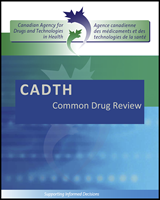Efficacy
Migraine-Specific Quality of Life Questionnaire (MSQ): Within-group comparison: Irrespective of the group assignment in the DB phase, there was a clinically important improvement in MSQ scores at the end of the study compared with baseline in both Studies 079 and 080 for both the onabotulinumtoxinA/onabotulinumtoxinA group and the placebo/onabotulinumtoxinA group (). Some patients went from the worst possible health-related quality of life (HRQoL) to the best possible HRQoL (MSQ score of 100 at baseline and improved by 100 at week 56). Some patients had a worse MSQ score compared with baseline.
Baseline and Mean Change From Baseline at Week 56 in MSQ Scores.
Between-group comparison: In both studies, there were no statistically significant differences between onabotulinumtoxinA/onabotulinumtoxinA and placebo/onabotulinumtoxinA for any of the domains (role function – restrictive [RR], role function – preventive [RP], and emotional function [EF]) at week 56.
Headache Impact Test (HIT-6): Within-group comparison: Irrespective of the group assignment in the DB phase, there was an improvement in mean HIT-6 scores at the end of the study compared with baseline in both Studies 079 and 080 for the onabotulinumtoxinA/onabotulinumtoxinA group and the placebo/onabotulinumtoxinA group (). Whether this finding is clinically important is unknown because the MCID for within-group difference has not been determined. Nonetheless, patients went from a score of greater than 60 points at baseline (severe impact on the daily life of the respondent) to a score of 56 to 59 (substantial impact on the daily life of the respondent) at the end of the study (data not shown).
Baseline and Mean Change From Baseline at Week 56 in HIT-6 and Headache Impact Scores.
Between-group comparison: In both studies, there were no statistically significant differences in mean HIT-6 scores between the onabotulinumtoxinA/onabotulinumtoxinA and placebo/onabotulinumtoxinA groups at week 56.
Acute headache pain medication intake: Within-group comparison: The frequency of acute pain medication intake decreased at week 56 compared with baseline for both groups in both studies (). Similarly, the number of medication days decreased from 14 to 15 days per month at baseline, by eight to nine days per month at week 52. The intake of acute pain medications could not be completely stopped; more than 70% of patients still required acute pain medications at week 56. However, the overuse of acute pain medications was decreased to less than 20% of patients at week 56, compared with more than 60% at baseline.
Acute Headache Pain Medication Intake.
Between-group comparison: Statistically significant differences were obtained in acute headache pain medication days and acute headache pain medication overuse at week 56. The onabotulinumtoxinA/onabotulinumtoxinA group had a greater improvement in medication days and medication overuse compared with the placebo/onabotulinumtoxinA group; however, the differences were small and not likely to be clinically important.
Headache/Migraine days: Within-group comparison: Patients experienced a decrease in the frequency of headache days by 11 to 12 days per month at week 56, from approximately 20 days per month at baseline (). Similarly, the frequency of migraine/probable migraine days decreased by 10 to 11 days per month at week 56, from approximately 19 days per month at baseline. This means that patients experienced on average eight to nine migraines per month, reverting back to a diagnosis of EM.
Improvement From Baseline in Headache Days and Migraine Days.
Between-group comparison: In Study 079, there were no statistically significant differences between the onabotulinumtoxinA/onabotulinumtoxinA group and the placebo/onabotulinumtoxinA group for any of the measures related to headache/migraine days, whereas in Study 080 all between-group differences were statistically significant.
Harm: An event occurring during the DB phase and continuing into the OLE phase was only counted in the DB phase. In addition, an event occurring during the DB phase and continuing into the OLE phase and whose severity increased in the OLE phase was only counted in the DB phase.
The number and percentage of patients with AEs, SAEs, and WDAEs are presented in and . A patient was counted once for each AE when multiple occurrences of the same AEs were reported.
Detailed Harms, Open-label Extension Phase.
There were no deaths. In the OLE phases of Studies 079 and 080, 58% of patients experienced an AE with onabotulinumtoxinA. Over the course of the five treatment cycles, 74% of patients exposed to onabotulinumtoxinA reported an AE.
In the OLE phases of Studies 079 and 080, the most common AEs were neck pain, sinusitis, and nasopharyngitis (). SAEs were infrequent. There were four cases of severe migraine, three cases of non-cardiac chest pain, three cases of uterine leiomyoma, and two cases of squamous cell carcinoma. Less than 5% of patients withdrew from the OLE phase due to an AE.
Dysphagia, neck pain, and cardiac events were identified as AEs of special interest (). Considering the entire study, approximately 10% of patients reported neck pain. Few patients reported dysphagia or a cardiac event. Other AEs of special interest included:
Systemic toxicity: There was no evidence of distant toxin spread.
Anaphylaxis reaction: There were no reports of anaphylaxis reactions.
Antibody formation: Serum samples for toxin-neutralizing antibody titer analysis were not collected in Studies 079 and 080. However, the sponsor indicates that “there is no heightened risk for immunogenicity in this patient population” (Clinical Summary Module 2.7.4, page 118).
Autonomic dysreflexia: There were no reports of autonomic dysreflexia.

